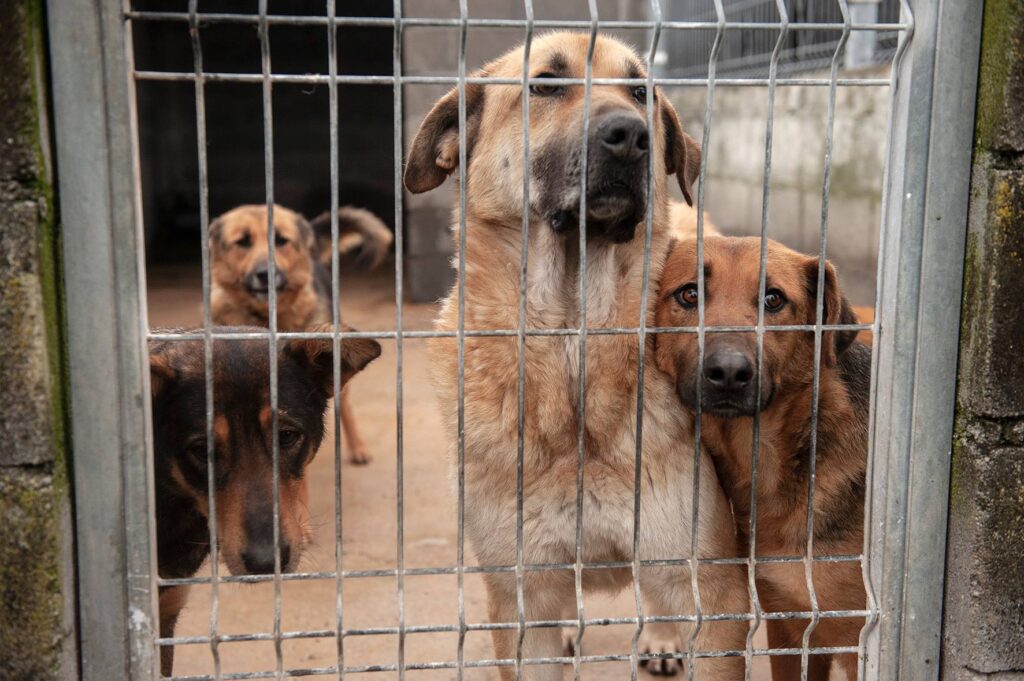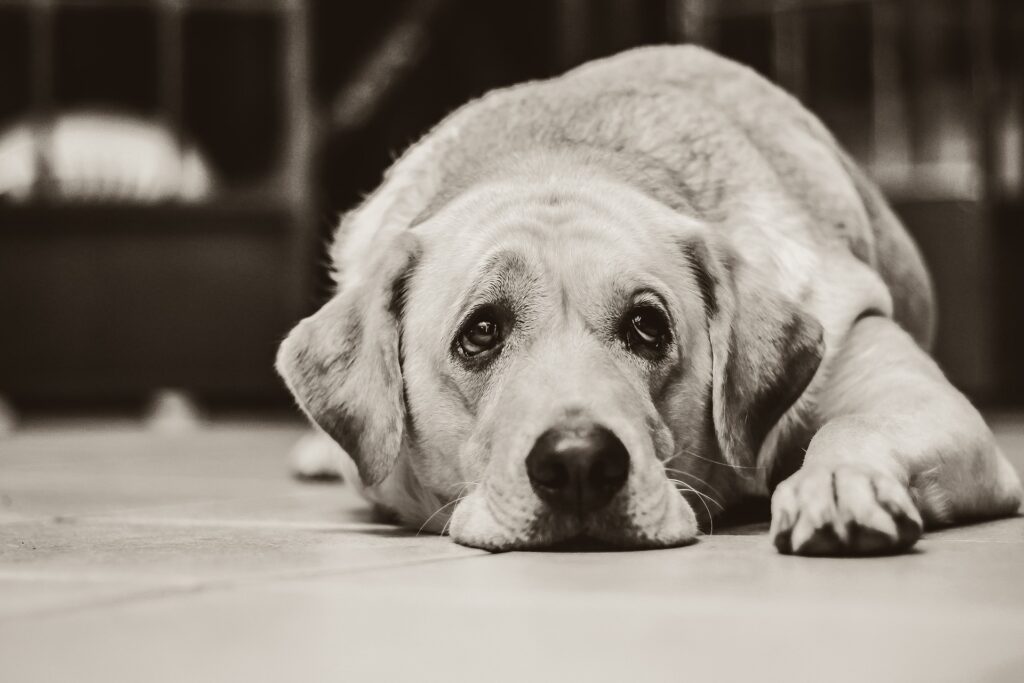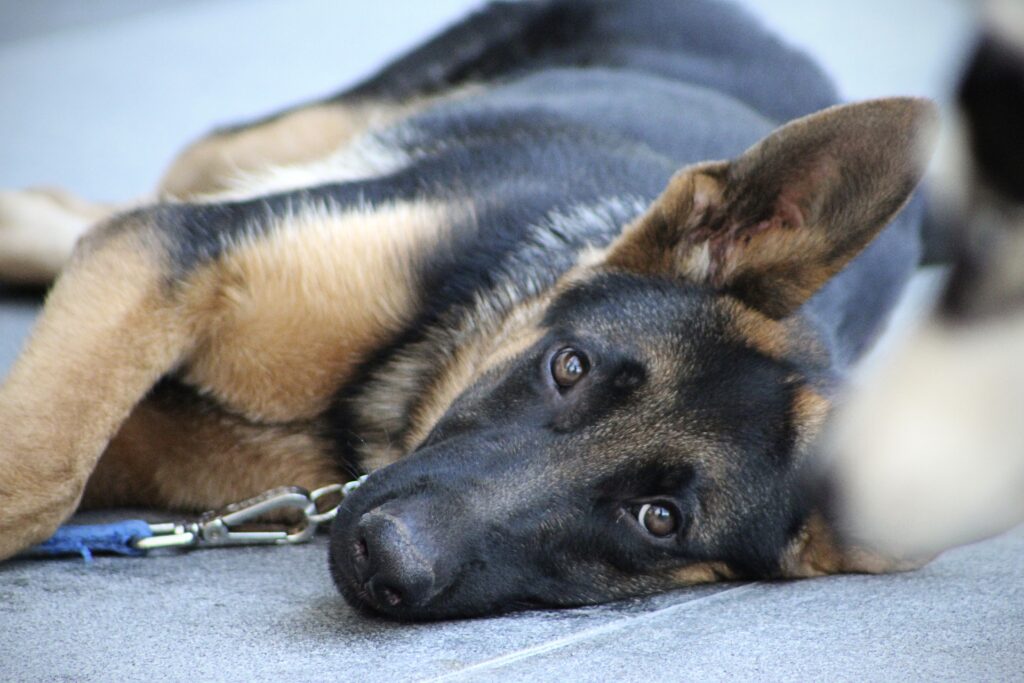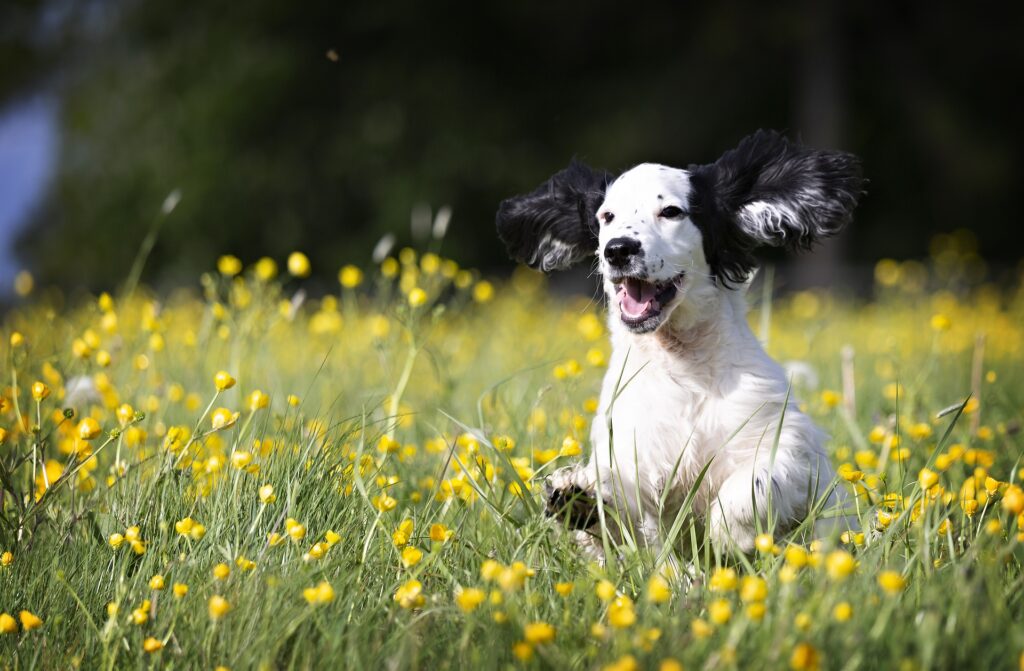When you adopt a dog, very quickly you will become familiar with the term compression, which our team will mention often whilst explaining how you can help your dog settle on arrival to your home.
Compression and decompression: Why it is important
Compression in a dog is an emotional state by which the dog is depressed, emotionally unstable and shut down emotionally and physically. Dogs go into compression to survive periods of high stress and emotional discomfort. When a dog is compressed, he is not himself; he will hide parts of his personality and exaggerate others better suited to help them in that situation. We do not see the real dog; we see a dog that is exhibiting a behaviour that will help him survive within that situation. Physically, their stress hormones (Adrenaline, cortisol and noradrenaline) will be very elevated flooding their brain and organism with chemicals that affect the dogs body functions and how the dog thinks, feels and perceives the world.
Compression happens when dogs are in the pound, which is a very unnatural environment to them, as they are forced to live very restricted lives in small cages with many other dogs in very close proximity. Dogs will have to adapt their behaviour to help them cope and survive in this situation often to avoid being killed by other dogs. How compression develops changes from dog to dog. This is why it is so difficult for any rescuer to describe a dog’s personality accurately whilst in a pound.

Another period of high stress and uncertainty for a dog is the moment they leave the pound on their journey to their new home in the UK. Dogs will leave the pound for the first time in many months or years to be taken to temporary kennels so their paperwork can be verified. You can imagine how worried and scared they feel. After two days, they are again put in a van and travel for more than 48 hours to the UK. On arrival, they will be collected by their new family and taken to their new home. For them this is a new and strange surrounding and the overwhelming emotion that your dog will feel is fear and stress. Will these new humans harm him? How can he escape? How small can he make himself to become invisible?
During these few days and weeks with their new family, the dog will start the process of decompression. Sometimes, we can clearly see that a dog is worried; they are scared, or hide in a corner, growl, or they scan the horizon looking for ways to escape. They may also suffer from runny stools or on the contrary, constipation, they may refuse to eat or drink or they may eat and drink to excess. Sometimes our dogs will seem calm and serene whilst inside a storm of anxiety is raging.

What happens in your dog’s body
Flight and fight hormones levels, adrenaline and noradrenaline will be raised followed by cortisol and other relate hormones. Once these hormones are raised they have a physical impact such a higher than normal heart rate, blood pressure can drop considerably and the gut can become paralytic, (constipated) or hypermobile and this results in passage of no faeces for up to five days or constant Diarrhoea.
The hormones reach a critical concentration and the body releases other mechanisms to stop these hormones circulating as an attempt to prevent continuous stress on heart and respiratory system around the three-day mark but can go up to five days. You can have a dog that does not eat or drink for five days. The dog will be getting water from somewhere but will not let you see that.
How Long does this last?
The process of decompression in a dog can take up three weeks as a minimum, as adrenaline and noradrenaline drop around the three day mark. It takes a long time for cortisol to drop to baseline, more if the adopter does not follow some simple rules.
The adopter has an important role in allowing the process of decompression to run smoothly. The first three days are the most important ones when the stress levels will be at its highest and this is when dogs are at the highest risk of escaping too. Please note that each dog is an individual and variations on the above may occur.

What can we do during this time?
On arrival of the dog, the adopters will want to provide the dog with love and comfort in the belief that love will make them feel better. This could be a stressful approach from the dog’s point of view. Inadvertently by wanting to love the dog, adopters contribute to increase the levels of stress in the dog. What you see as love and care, the dog can see as pressure and can bring about a fearful response.
So, when the dogs arrives it is important that adopters have no expectations and put no pressure on them so the stress hormone levels circulating in excess in your dog’s body will slowly reduce. You can help your dog by following a number of guidelines listed below:
- Give the dog an area where they can rest and be calm and can see you from a safe distance – For example corner of a room where he is safe with no electrical wires.etc
- Do not give treats to dogs from your hand, better to drop them on the floor so the dog can make the decision to have them without pressure from you
- Use high value treats always such as chicken
- Give the dog Dorwest skullcap valerian, a herbal remedy that helps improve the quality of your dog’s sleep
- Put a non-escape harness on your dog on arrival and keep it on for a few days to avoid your dog can escape. A non-escape harness has a third strap that goes behind the ribcage. Ensure that when in the garden the dog has a training lead always on
- Do not expose the dog to new environments until he is fully comfortable in the house, garden. Wait a few days for the dog to be taken for a walk to allow decompression to occur. Minimum five days
- Limit the number of new experiences that the dog is exposed to. For example, do not bath your dog until a few days have passed and he feels more comfortable in the house, and do not visit the vet unless indicated for at least two weeks
- Ensure that food and water are available when you leave the room. Your dog may not want to eat or drink when you are around.
- Encourage your dog to sleep in their safe space, usually a bed in the corner of a room or the side of the sofa. At this point it is best not to encourage dogs to sleep on beds or sofas, as these are busy places but some dogs may identify a sofa as their safe space
- Anything your dog does or gets during this period they will identify with as the norm and safe and could expect this to happen for the rest of their lives so keep things simple for him.
- Ensure that all the exposure to family members is positive by getting everyone to drop tasty treats on the floor when passing by the dog. From the dogs point of view when you come into the room nice things happen. Soon he will associate these happy events with you and your family
- Feed the dog a low protein diet, less than 19%. High protein diets contribute to high stress levels. Remember we are working to bring these stress levels down
- It is important during this time that the dog learns you are not there and available all the time, but initially this has to be done in very short and often amounts –Go for a walk on your own for a couple of minutes three times a day. Leave a camera, smart phone or tablet recording whilst you are out. Is he calm in his bed or stressed?
- Try not to interact with your dog by either looking directly at him or calling or petting him. The family life needs to carry on so the dog gets used to the voices that are around him and then he will be happy being called his name and being spoken to once, he is accustomed.
- Some of these dogs only ever had pain from human touch and the dog does not know that you want to love him. He may expect pain. Therefore, we advise no touch until the dog is moving well through decompression. That will be a different time for every dog.
Why is this important?
When adopters put a lot of pressure on dogs on arrival, they disrupt the process of decompression and the dog’s high stress levels continue to increase. This results in a number of behavioural and physical issues that are disturbing for our dogs and for us such as:
- Separation anxiety- extreme fear and distress when left alone in the home
- Reactivity on the lead – fear of dogs, humans, cars where the dog lunges against when in the lead
- Depression and full emotional shut down
- Digestive problems with the dog suffering from loose stools or constipation
- Toileting inside the home
- Extreme fear and anxiety – the dog cowers and trembles
- Scanning for escape exits constantly
- Growling and barking
Nothing illustrates this better than the story of Little Lilly. Little Lilly arrived to her new home with high levels of stressed that showed in her being very scared of her environment. The adopter wanted to help her and thought that love would help her see she was safe. However, continuous hugs and pettings seemed to have the opposite effect with Little Lilly getting more and more distressed and scared. After five months, Little Lilly refused to engage with the adopter and went into full emotional shutdown where she would not engage at all with her environment. Following the adoption breakdown Little Lilly was placed with a foster, which proceeded to ignore her from the moment she arrived. The foster provided Lilly with the food, water, opportunities to toilet but acted as if Little Lilly was not there. There was no attempt to pet her or even look at her. At the same time little Lilly was put on skullcap and valerian and a very low protein diet. This allowed little Lilly to go through the stages of decompression and after three weeks Little Lilly wanted to play, and run happily around the house engaging fully with the adopter, toys and other dogs. Little Lilly was no longer depressed or shut down and was ready now to start the process of becoming a much loved pet and receive some love and attention.

